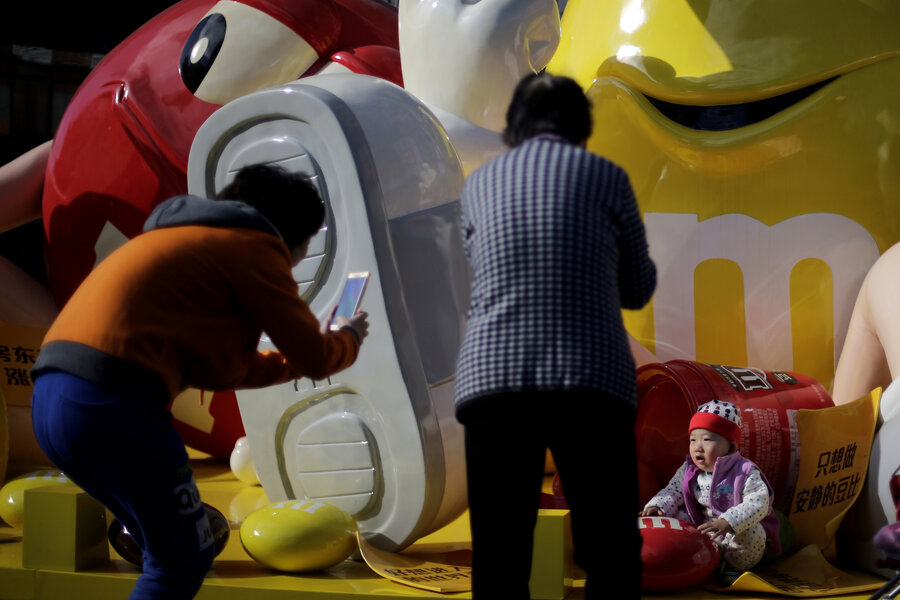China adds one to 'one-child' policy
Loading...
| Beijing
China said Thursday it would allow all married couples to have two children, signaling the end after 35 years to its drastic and unpopular "one-child" policy that has been blamed for skewing the gender balance, forcing women into unwanted abortions and bringing about a rapidly aging workforce.
The decision was the most significant easing of strict population policies that were long considered some of the ruling Communist Party's most onerous intrusions into family life and had been gradually relaxed in recent years. Many rural families and some urban ones already were able to have two children.
The news elated 36-year-old Su Weihua of Guangzhou, who said she now plans to get pregnant next year and that she is eager for her 8-year-old daughter to have a sibling.
"I have looked forward to this for so many years — even had dreams about it! I cried every time when I woke up and realized it wasn't yet true. I thought it was so unfair," Su said. "I do not care if the second child is a boy or a girl, at my age, as long as he or she is healthy."
The party's Central Committee said in a statement that the decision was "to improve the balanced development of population" and to deal with an aging population. The official Xinhua News Agency said the proposal must be approved by the top legislature before it is enacted, which is essentially a formality. It gave no indication of when that would happen.
The move may not spur a huge baby boom, however, in part because fertility rates are believed to be declining even without the policy's enforcement. Previous easings of the one-child policy have spurred fewer births than expected, and many people among China's younger generations see smaller families as ideal.
Demographers worry the change will not be in time to reverse the declining fertility rate.
"The good news is, it is here. The bad news is, it is too little, too late," said Cai Yong, a sociology professor at the University of North Carolina at Chapel Hill.
The statement followed the committee's meeting this week to chart China's economic and social development through 2020. In recent years, it has been unusual for such plenary sessions to result in major decisions. They generally focus on economic topics, and there was no indication that this one would take action on the one-child policy.
China, which has the world's largest population at 1.4 billion people, introduced the one-child policy in 1979 as a temporary measure to curb a then-surging population and limit the demands for water and other resources. Soon after it was implemented, rural couples were allowed two children if their firstborn was a girl. Ethnic minorities are also allowed more than one child.
Chinese families with a strong preference for boys have sometimes resorted to aborting female fetuses, a practice that has upset the ratio of male to female babies. China has rates of up to 115 boys per 100 girls at birth — compared with what are considered normal rates at birth of about 107 boys to 100 girls.
The imbalance makes it difficult for some men to find wives, and is believed to fuel the trafficking of women as brides.
Couples who broke the rules have been forced to pay a fee in proportion to their income. In some cases, rural families saw their livelihood in the form of their pigs and chickens taken away.
Couples have at times been pressured to consent to abortions or sterilization by local family planning officials, or threatened with the loss of their jobs if they work as teachers or in other public sector jobs.
The US welcomed the policy change by China as a "positive step," but said it did not go far enough.
"We also look forward to the day when birth limits are abandoned altogether," said White House spokesman Josh Earnest, adding that the US will keep working around the world to end coercive birth policies such as forced abortion and sterilization.
Amnesty International said Chinese women remain at risk of forced abortions and intrusive forms of contraception.
"The move to change China's one-child policy is not enough. Couples that have two children could still be subjected to coercive and intrusive forms of contraception, and even forced abortions — which amount to torture," William Nee, China Researcher at Amnesty International, said in a statement.
In November 2013, the party announced it would allow couples to have two children if one parent was a single child. The decision announced Thursday removes all remaining restrictions limiting couples to only one child.
Real estate agent Zhang Linghui said the policy change was a "sign of respect toward the people."
"You should be able to choose how many kids to have," she said in an interview in downtown Beijing.
The government credits the one-child policy with preventing 400 million births and helping lift countless families out of poverty by easing the strain on the country's limited resources. But many demographers argue the birthrate would have fallen anyway as China's economy developed and education levels rose.
Moreover, the fall in the birthrate has pushed up the average age of the population and demographers foresee a looming crisis because the policy reduced the young labor pool that must support the large baby boom generation as it retires.
"It's better late than never," said Willy Lam, an expert on Chinese politics at the Chinese University of Hong Kong.
"It might serve to address the current imbalance in the sense that if they do not boost the growth rate, then very soon, within 20 years or less, the working population will be supporting four aged parents."







